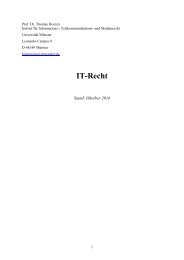3d4yVkKMl
3d4yVkKMl
3d4yVkKMl
You also want an ePaper? Increase the reach of your titles
YUMPU automatically turns print PDFs into web optimized ePapers that Google loves.
- 24 -<br />
46. Article VI of the Convention states that “[t]he Commission may from time to time make<br />
recommendations to any or all Contracting Governments on any matters which relate to whales or<br />
whaling and to the objectives and purposes of this Convention”. These recommendations, which<br />
take the form of resolutions, are not binding. However, when they are adopted by consensus or by<br />
a unanimous vote, they may be relevant for the interpretation of the Convention or its Schedule.<br />
47. In 1950, the Commission established a Scientific Committee (hereinafter the “Scientific<br />
Committee” or “Committee”). The Committee is composed primarily of scientists nominated by<br />
the States parties. However, advisers from intergovernmental organizations and scientists who<br />
have not been nominated by States parties may be invited to participate in a non-voting capacity.<br />
The Scientific Committee assists the Commission in discharging its functions, in particular<br />
those relating to “studies and investigations relating to whales and whaling” (Article IV of the<br />
Convention). It analyses information available to States parties “with respect to whales and<br />
whaling” and submitted by them in compliance with their obligations under Article VIII,<br />
paragraph 3, of the Convention. It contributes to making “scientific findings” on the basis of which<br />
amendments to the Schedule may be adopted by the Commission (Art. V, para. 2 (b)). According<br />
to paragraph 30 of the Schedule, adopted in 1979, the Scientific Committee reviews and comments<br />
on special permits before they are issued by States parties to their nationals for purposes of<br />
scientific research under Article VIII, paragraph 1, of the Convention. The Scientific Committee<br />
has not been empowered to make any binding assessment in this regard. It communicates to the<br />
Commission its views on programmes for scientific research, including the views of individual<br />
members, in the form of reports or recommendations. However, when there is a division of<br />
opinion, the Committee generally refrains from formally adopting the majority view.<br />
Since the mid-1980s, the Scientific Committee has conducted its review of special permits<br />
on the basis of “Guidelines” issued or endorsed by the Commission. At the time that JARPA II<br />
was proposed in 2005, the applicable Guidelines had been collected in a document entitled<br />
“Annex Y: Guidelines for the Review of Scientific Permit Proposals” (hereinafter “Annex Y”).<br />
The current Guidelines, which were elaborated by the Scientific Committee and endorsed by the<br />
Commission in 2008 (and then further revised in 2012), are set forth in a document entitled<br />
“Annex P: Process for the Review of Special Permit Proposals and Research Results from Existing<br />
and Completed Permits” (hereinafter “Annex P”).<br />
B. Claims by Australia and response by Japan<br />
48. Australia alleges that JARPA II is not a programme for purposes of scientific research<br />
within the meaning of Article VIII of the Convention. In Australia’s view, it follows from this that<br />
Japan has breached and continues to breach certain of its obligations under the Schedule to the<br />
ICRW. Australia’s claims concern compliance with the following substantive obligations: (1) the<br />
obligation to respect the moratorium setting zero catch limits for the killing of whales from all<br />
stocks for commercial purposes (para. 10 (e)); (2) the obligation not to undertake commercial



